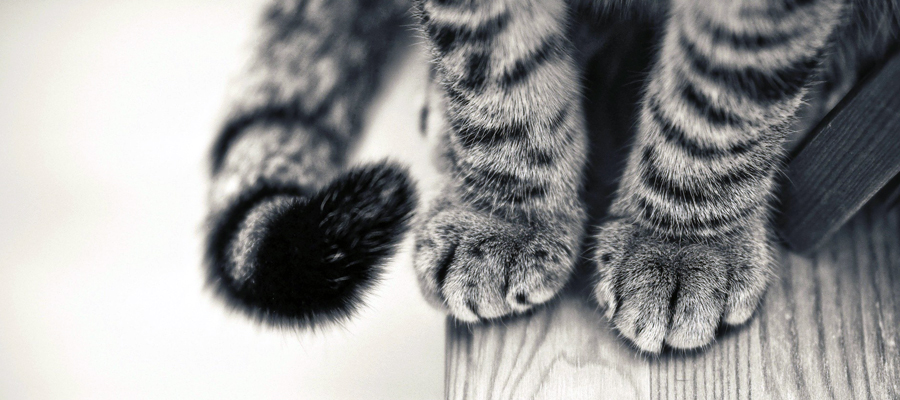Despite their independence, cats have a multiplicity of ways to communicate with their owners, who learn soon how to understand them.
But even the most careful owners can improve the comprehension of their own cat’s behaviour, learning to recognize tail’s movements and positions, often wrongly associated to the typical dogs’ones.
The tail, indeed, whose anatomical function is to help the cat to keep the balance and to change fastly direction during running, has also a very important communicative function for our cats, and the information that it provides to us, added to the other cat’s behaviours, allows us to understand better their mood and to take better care of them.
The upright tail, perpendicular to the back, for example, is the way our cats have to greet us and to show interest towards us, before the real physical contact.
A light tremble of the tail in the same position is a sign of even more affection and underlines his happiness to see us.

The curiosity, cat’s proverbial characteristics, or even the will to play, can be expressed always with the upright tail, but with the curved end. To a more moderate interest we can associate, instead, a straight tail, but in line with the back, possibly accompanied by a light swinging of it.
An extreme relaxation is shown, instead, by the tail that wraps the front paws of the sitting cat. It’s a rest position, in which the cat often falls asleep and it can be kept for long.
A strong tail’s swinging, that describes semicircles, can be associated to different emotions: in addition to be a way for the cat to make her kittens play, it can be associated to euphoria or to a strong irritability. In this case, as in other unclear cases, the other communication ways of the cat, that happen all simultaneously, allow us to understand the wellness level of our cat.
Cats use tail also to express negative emotions, such as rage or fear.
A tail that showily shakes is one of the fundamental signs of our cat’s anxiety.
A curved tail and upright fur are typical of a cat that is going to deal with another counterpart or with another animal which he feels in competition with.
It can signal rage or fear that can be expressed even hiding the tail between the paws, a strong sign that our cat is afraid and he feels threatened.
In these cases, rather than finding immediately a contact with our cat, we should search for the cause of his distress and remove it, giving then time to the cat to cheer himself up without forcing him!
However, do not forget that cats are capable hunters, too!
A low tail with the tense end, indeed, can show that the cat pointed to a prey and he is preparing to attack!


